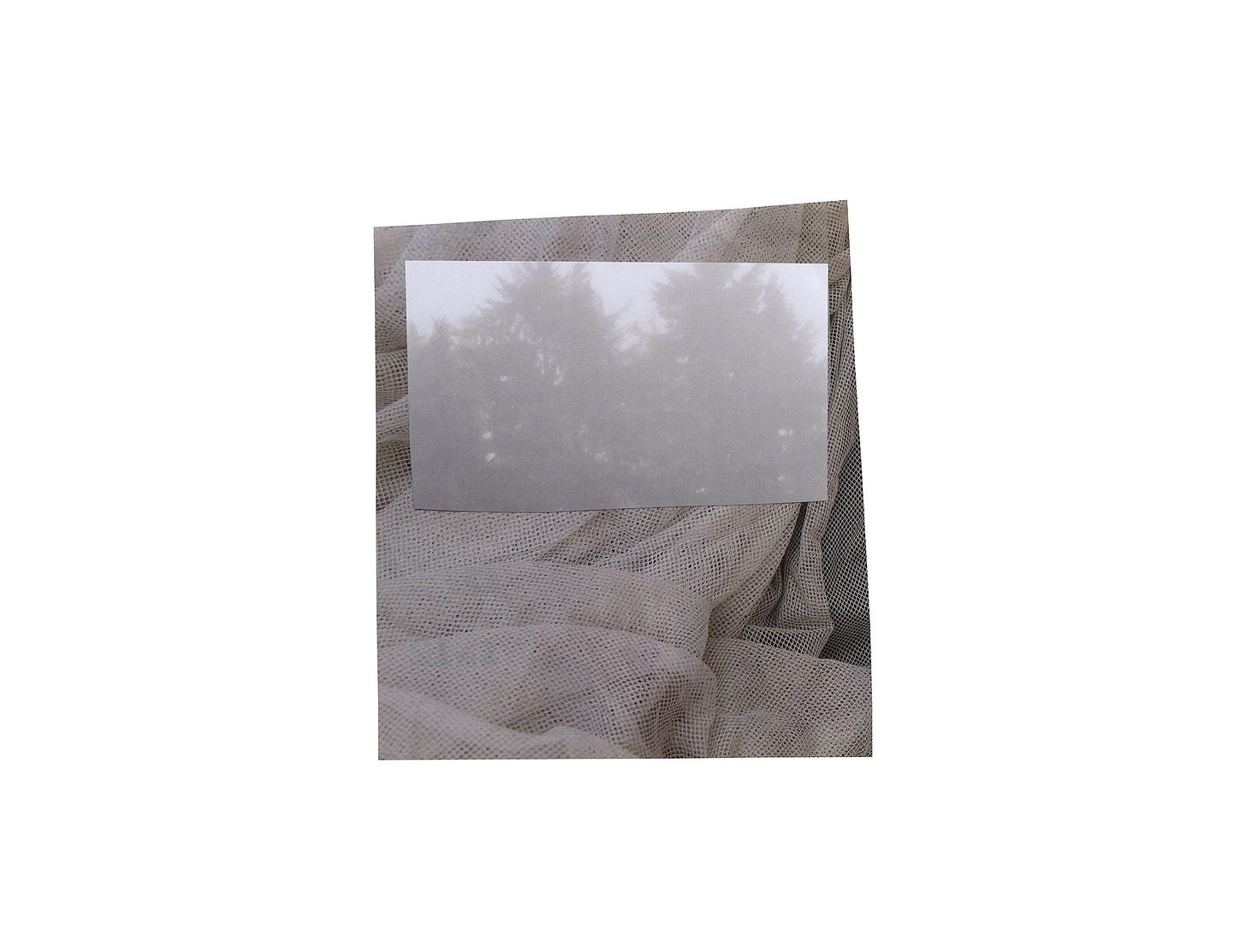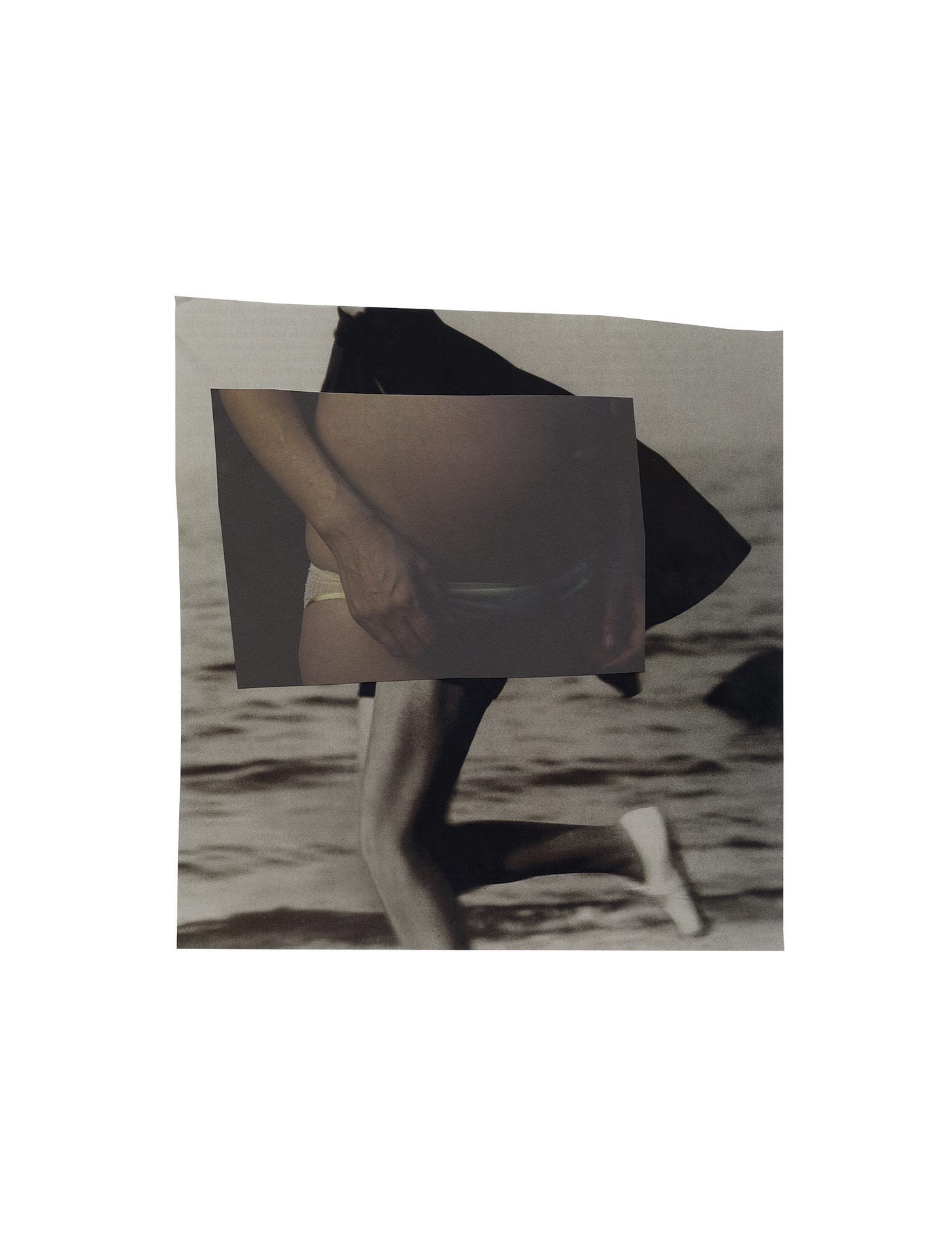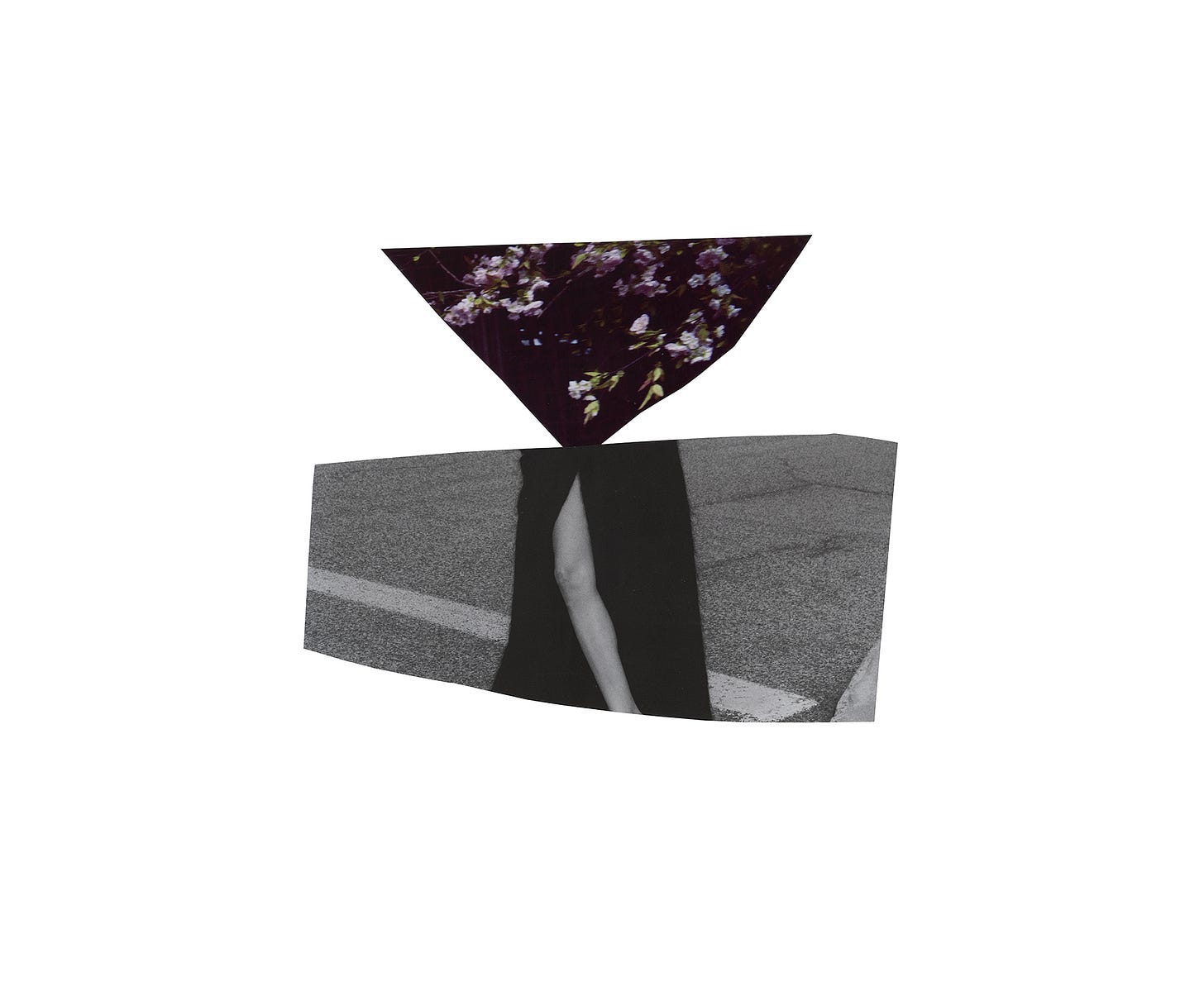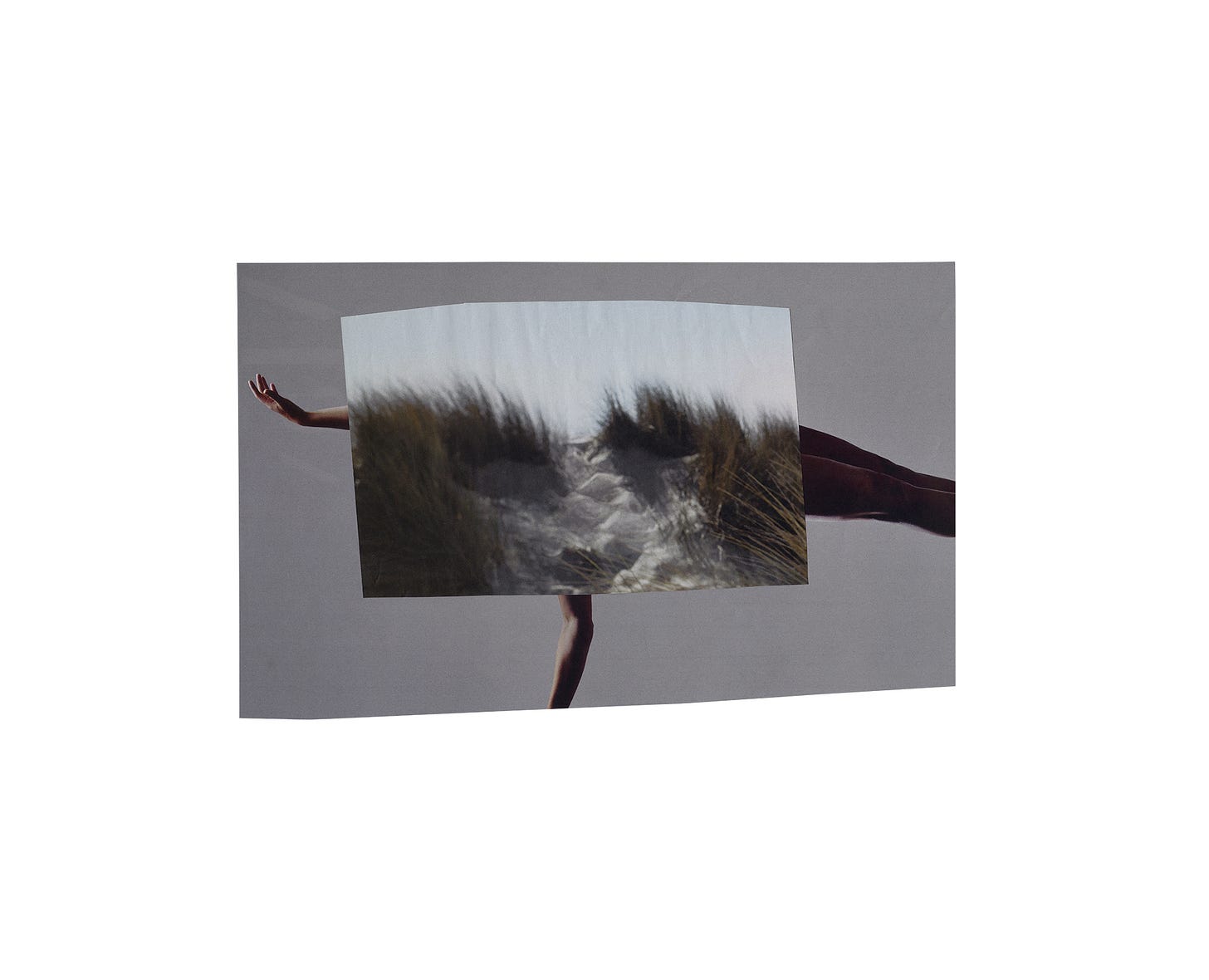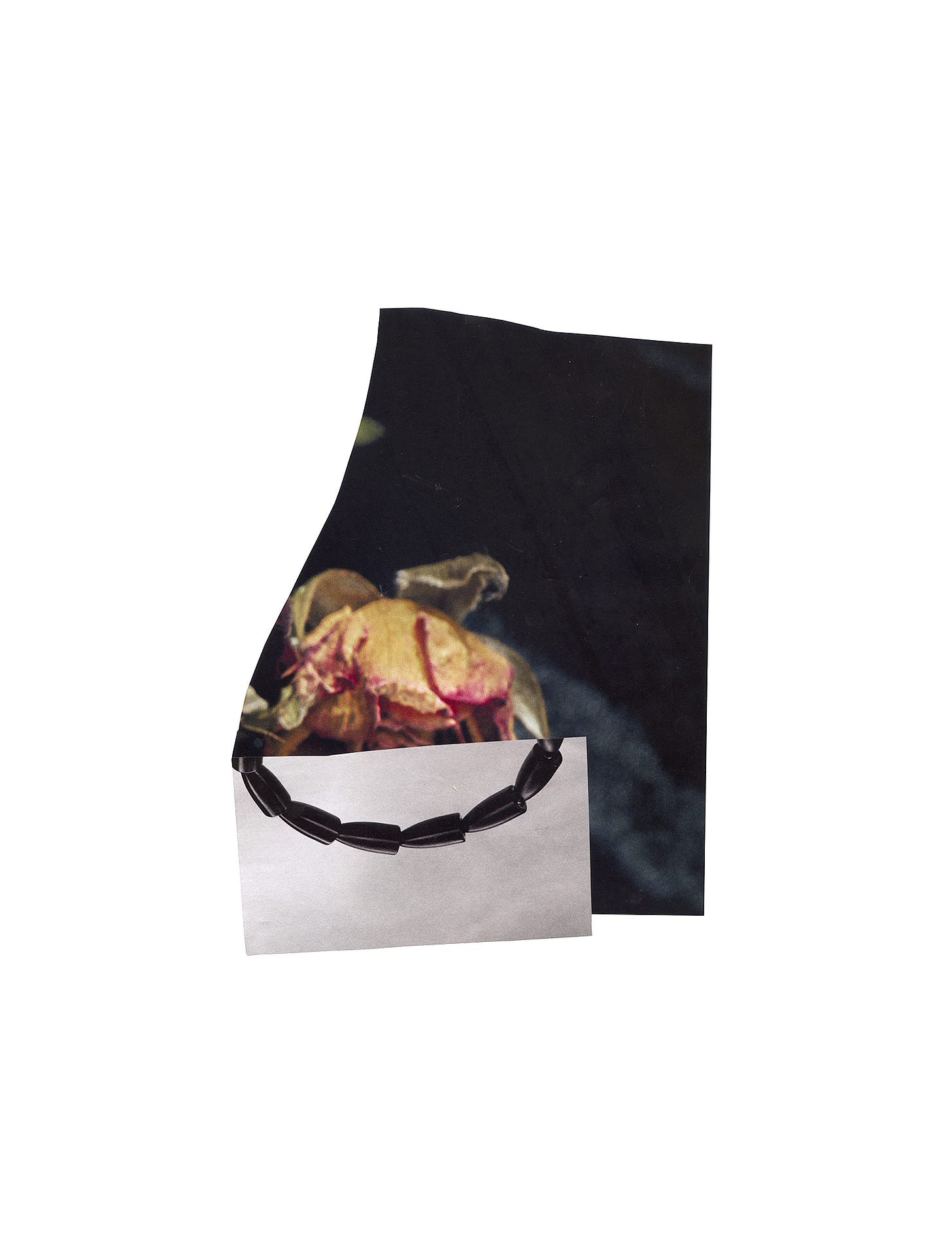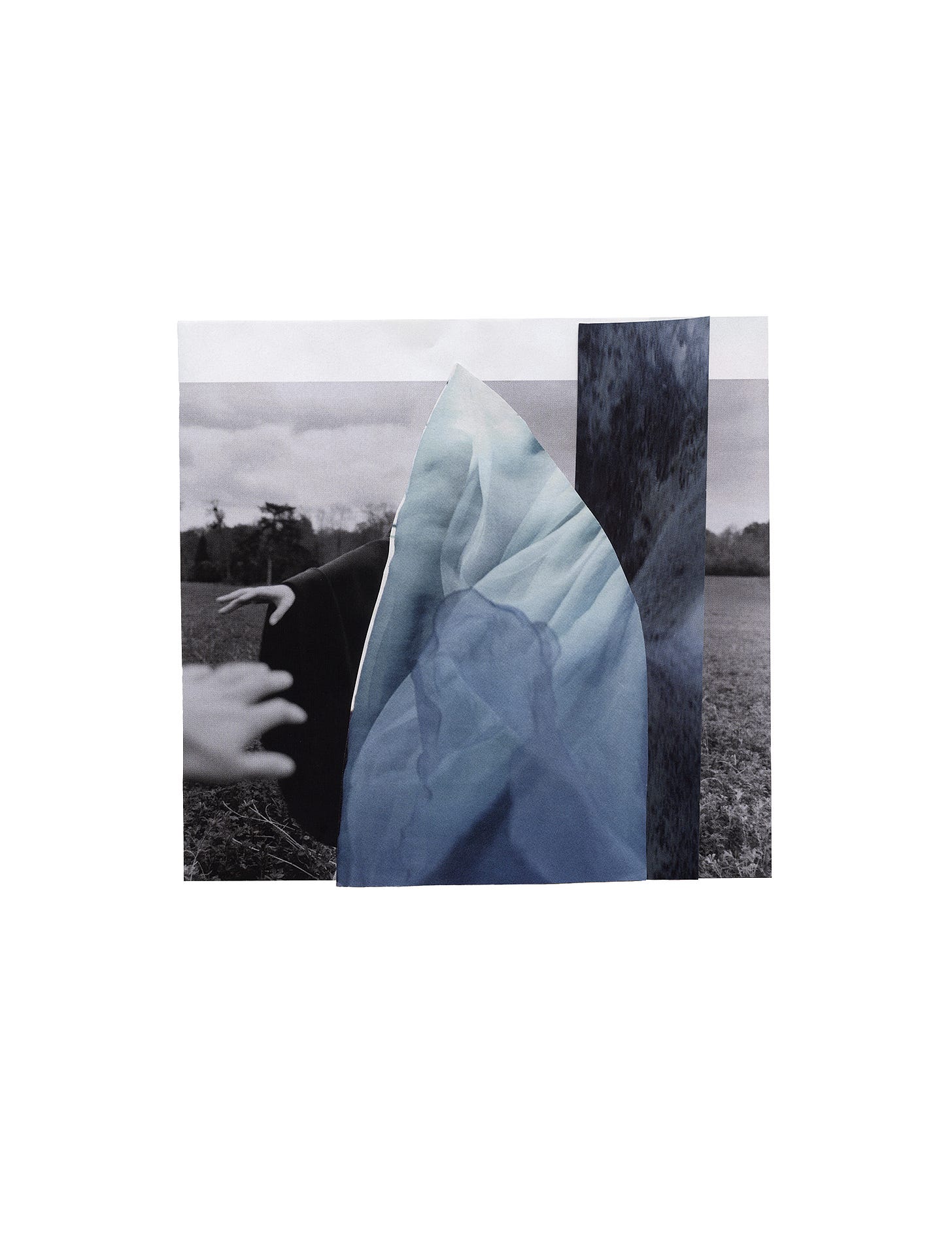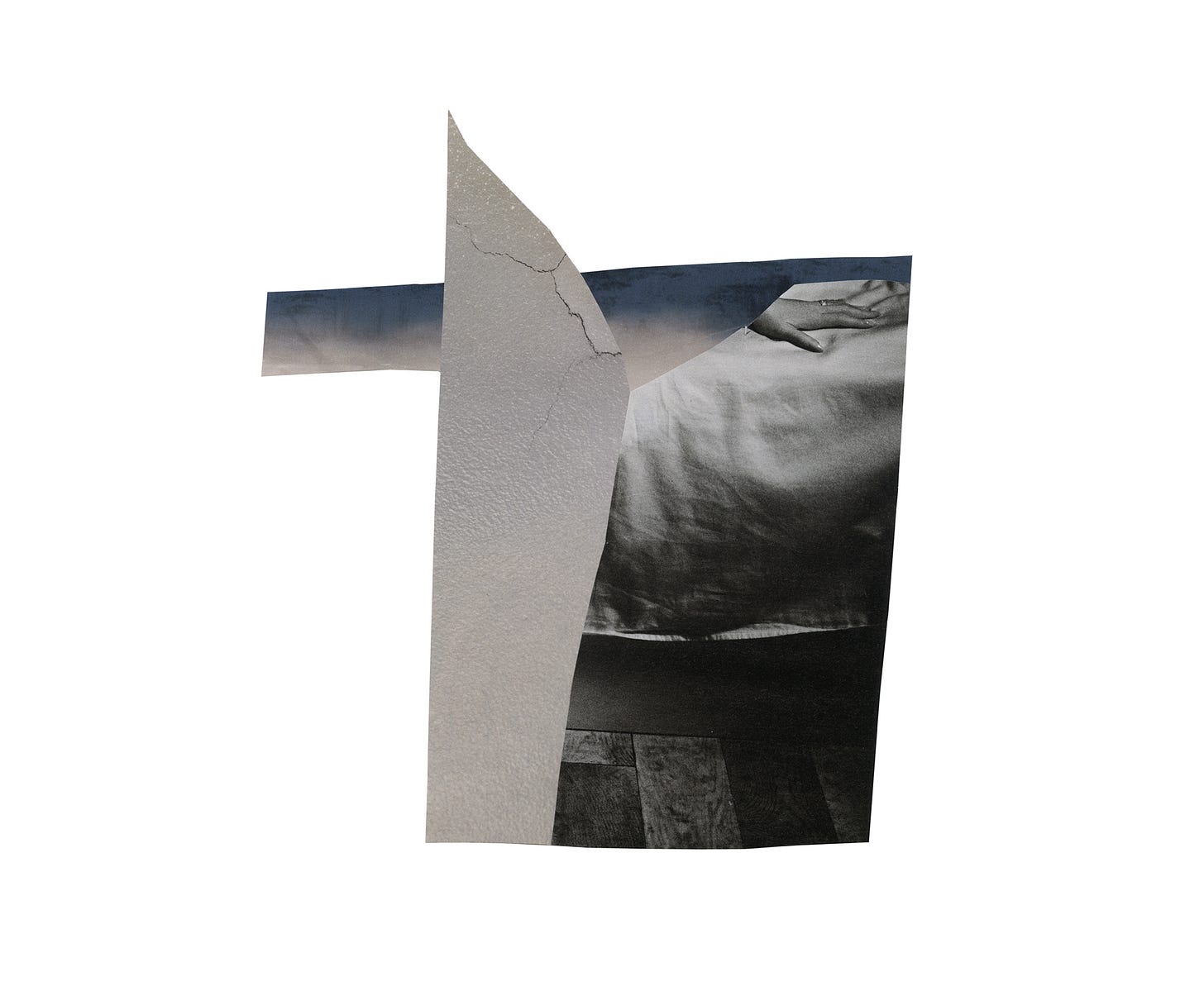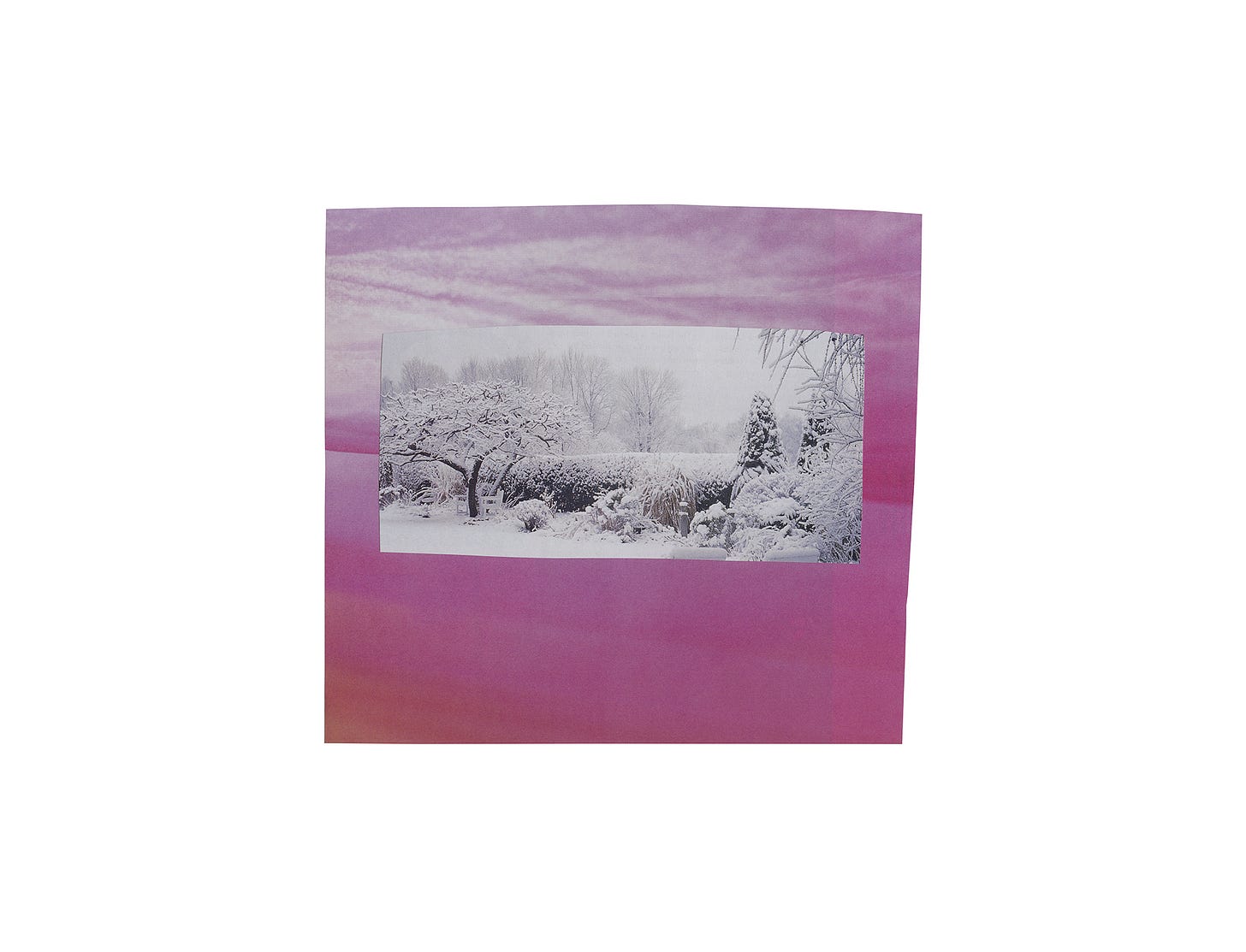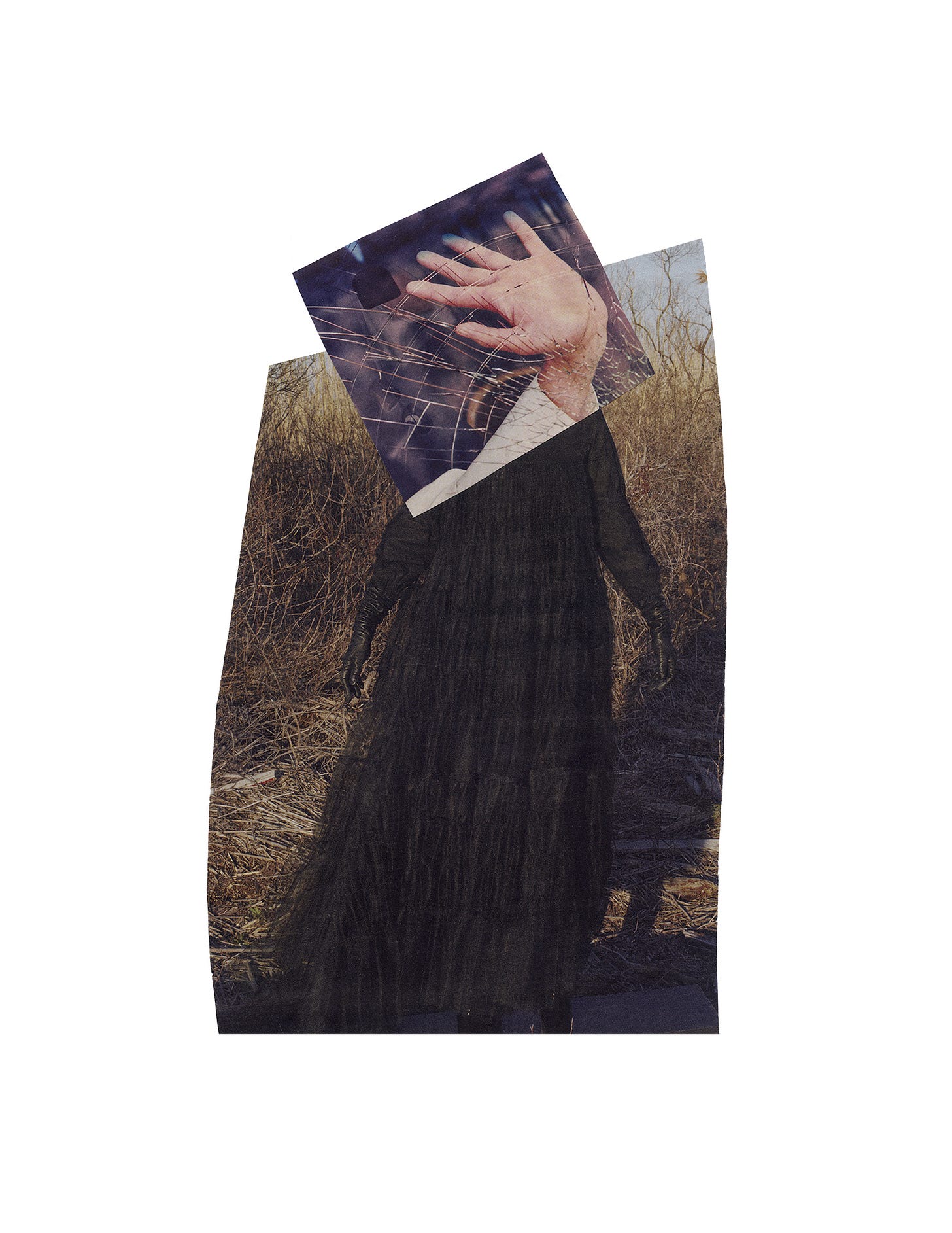As a GRIEVER’S BALL category, GRIEF ILLUSTRATED, is meant to be a break from language-based ideas about loss; it’s a place where we show instead of tell—and/but in preparing to show you Serrah Russell’s work, I found that our conversation made a welcome kind of demonstration, too.

As with previous GRIEF ILLUSTRATED featured artist Alyson Provax, I met Serrah Russell through the original early/mid-00s Seattle universe—and truly it was a world unto itself—known as Vignettes. As a curator and director there and elsewhere, Serrah contributes to a continually unfolding array of exhibits and happenings from emerging and underrepresented artists. (I will never not remember the feeling of care as she and Vignettes founder Sierra Stinson readied What Feels Most True on a frigid new moon night in late 2016 just after my father died.) As an artist herself, she’s is a kind of Robin Hood—swiping analog, on-paper images from the realm of commercialized desire and giving them actual desire, actual meaning, and actual poetry. Though if you’re the type, like me, to pay special attention to long and meandering titles, what you receive might be more like poetic micro-narratives. Serrah’s tactile, fertile images—with their raw and rounded edges, their generous and crafty windows onto the artist’s hand— are each a scene, a story, a self. Together they’re all of us and any of us, and most everything we’ve ever felt. I recommend following Serrah on IG for more.
How did you come to collage? What does collage allow for that other mediums don't, or how does it satisfy a specific desire or question or idea?
I came to collage while studying abroad in Rome during my last year of undergrad at UW. I was a photography major but when traveling in Italy, I just couldn't find my voice through the camera, so I was drawn to creating with collage, as I had more control to make the imagery feel more personal and specific to me. I found some amazing Italian fashion magazines, and started reconstructing them, shifting the original intention of the photos and turning them into something that had my voice in it.
Collage for me is a way of seeing, of re-seeing. I'm in love with the potential of it. It's also, at least how I most often do it, very physical and simple; just scissors, tape or glue. And by doing it that way, I have to channel my intuition and almost be meditative while creating. I trust my instincts to cut and then live with those decisions and keep moving forward. Whereas when I work digitally it doesn't always have that energy. But when I work physically, if I make a cut I don't love right away, it's been done, it's permanent, and I have to adapt, to keep moving forward, and accept that decision, rather than in Photoshop or digital where you have more options or can do a Ctrl + Alt + Delete.
Often your titles seem like one-sentence stories. Can you share a little about how titles come to you or how you come to them? Where in the process do they pop up or show up; does it ever start with the title? Does the title or story reveal itself along the way?
Thank you for saying that, that's very much what I want them to be. Short stories that give the viewer an entrance to the work, to see it in a new way. The titles became really important to me when I did my 100 Days project and I was posting daily on Instagram. Very few people were seeing the work in person or to scale so I wanted an additional window into the work and to guide the interpretation of the viewer, so the longer and more narrative titles came out of that.
Usually, I make the work first, allow it to rest and give myself some distance and then find the titles when I return to the work with fresh eyes. I'll have a general theme or feeling when I'm making the work but usually not a fully formed title. I try to leave some openness there. It's a bit of a different part of my creative practice too, the visual and the writing, so I tend to keep them separate, first viewing and responding and creating visually, and then looking at what I created visually and form words and language for that. With the titles I often try to look at the work as a viewer, not as the creator of the work myself.
Finally, there is a really emotionally saturated quality to your work. Maybe even because of what's not there in addition to what is. (Thinking of the white space, the minimal compositions.) What role do your emotions and feelings play in your practice? Are the stories and emotions—the grief perhaps in particular—yours, or are you drawing from some collective mood bank? Do your compositions heal or help personal experiences, and if so, is sharing them vulnerable or powerful or transformative or terrifying or ________? And whether or not the 'stories' in your work are directly yours, what do you hope your work can do for and to others? What do you want them to see, to sense, to know?
My emotions and feelings are pretty much the only motivator in my practice. I'm not that interested in making work from my head or some conceptual idea, not unless there's also some heart and feeling to it, because that to me is real life, and so to try to eliminate the interior emotional world, makes it feel inauthentic and counter to the human experience.
I am definitely pulling influence from my own past or current loves and losses, questions and realizations. For awhile I was processing the death of my grandfather in September 2018 who I'd consider one of my soulmates. He died just as I was in the beginning of the pregnancy with my first child who I named after him. My grandfather's death and my son's birth, and me becoming a mother are all linked and tangled up together for me.
And prior to that, I made work about grief from a pregnancy loss, my first pregnancy that ended unexpectedly at 10 weeks in May 2018. And in some ways that grief wasn't about that particular birth but about the future and about the realization that all future pregnancies I would carry that experience in my body of it happening. There was a real loneliness of going through something like that, especially in a early time of pregnancy where not many knew I was going through it, and it's just isolating because we each experience grief so specifically and individually and so there's a lot of feeling disconnected from others in that space. I went through that grief while also being part of the curatorial team for the "a lone" project. Your work was part of that exhibition and was such a lifeline for me.
Because I know personally how art can be an outlet, a gift, a place to put our feelings, a way to connect, I always hope that some of my pieces will help someone feel less alone.




